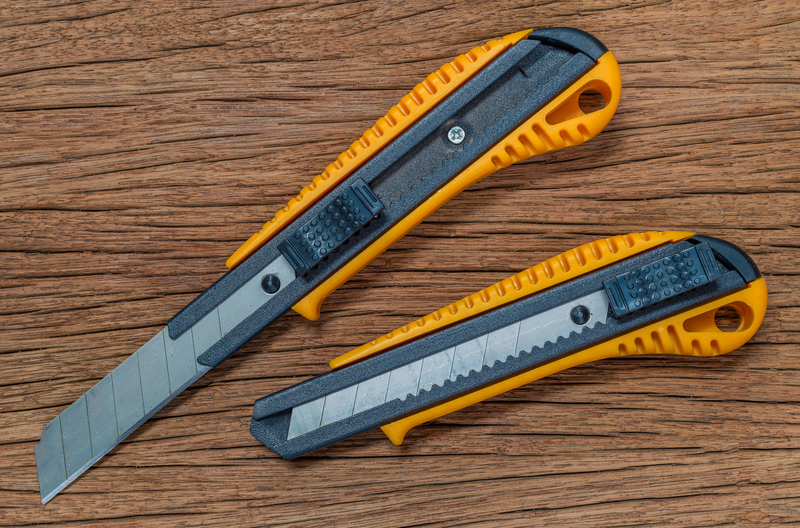The Perils of DIY Piano Moving: What's at Stake?
Posted on 29/05/2025
The Perils of DIY Piano Moving: What's at Stake?
Moving a piano on your own may seem like a practical and cost-effective solution. However, the risks associated with a do-it-yourself piano move can significantly outweigh the rewards. From personal injuries and property damage to the potential for ruining your priceless instrument, understanding the real dangers and hidden costs is essential. In this comprehensive guide, we will explore the perils of DIY piano moving and provide crucial insights to help you make an informed decision.
Understanding Piano Relocation: More Than Meets the Eye
Moving a piano involves a lot more than simply lifting and shifting. Pianos are intricate, delicate, and exceptionally heavy instruments. They typically weigh between 300 and 1200 pounds, with grand pianos on the heavier side. Beyond the substantial weight, the shape and design make pianos particularly cumbersome and awkward to maneuver, especially in tight spaces. Whether it's an upright piano, a baby grand piano, or a concert grand, the risks of DIY piano transport remain high.
Why Are Pianos So Difficult to Move?
- Weight Distribution: Most of a piano's weight is concentrated at the top, making it prone to tipping.
- Size and Shape: Bulky dimensions and fragile legs/moving parts make accurate handling essential.
- Delicate Mechanism: Composed of over 12,000 individual components, many of which are vulnerable to shocks and bumps.
- Varied Surfaces: Gliding across carpets, wood floors, or up and down stairs requires different skills and techniques.
Even for the most seasoned DIY enthusiasts, piano removal and transport presents unique challenges that are too often underestimated.

What's at Stake When Attempting DIY Piano Moving?
Before you rally your friends, rent a truck, and attempt to move your beloved piano, consider what is truly at stake. Below are the real, tangible dangers associated with amateur piano relocation.
1. Risk of Personal Injury
Safety should always come first. Unfortunately, musculoskeletal injuries are very common during DIY piano moves. The sheer weight and unwieldiness of a piano can result in:
- Crushed fingers, toes, and limbs: A single slip can cause the instrument to shift suddenly and catch a hand or foot underneath.
- Back strain and herniated discs: Improper lifting techniques greatly increase the likelihood of severe spinal injuries.
- Trips and falls: Navigating tight staircases or slippery surfaces while handling a piano causes countless accidents every year.
- Severe trauma: In the worst cases, heavy pianos can topple over and cause critical or even life-threatening injuries.
2. Potential for Costly Property Damage
Your home is likely filled with objects, fixtures, and surfaces easily damaged during a piano move. The risks include:
- Scratched floors and gouged staircases: Few things mar the beauty of hardwood like sliding a piano across its surface.
- Dented walls and damaged doorframes: Even minor miscalculations can lead to noticeable property harm.
- Broken tiles or cracked concrete: The weight of a piano, if dropped suddenly, may shatter or crush surfaces beneath it.
- Stuck or jammed pianos: Many DIY movers underestimate a piano's size, often finding themselves stuck mid-move in a doorway or hallway, causing significant disturbance and damage during extraction.
3. Irrepairable Damage to the Piano
It's not just your health and property at risk. Your piano itself is highly vulnerable during a move. Problems commonly encountered include:
- Broken keys and pedals: These sensitive elements are easily dislodged or snapped when not correctly handled.
- Soundboard cracks: Rapid temperature or humidity changes, as well as hard jolts, can crack the wooden soundboard, leading to costly repairs or a ruined instrument.
- Dislodged strings and pins: A minor bump can throw the piano out of tune; a major shock might tear out vital pieces.
- Finish and veneer damage: Pianos are as much works of art as musical instruments--scratches, chips, and dings mar their aesthetic value and sentimental worth.
4. Legal and Liability Risks
Another crucial, but often overlooked, downside of DIY piano moving involves legal and financial liabilities. These can arise when:
- Someone helping you is injured: You, as the property owner, could be held responsible for medical bills or legal claims.
- Shared building damage occurs: In an apartment or condo, damaging communal areas might land you hefty charges from your landlord or homeowners' association.
- Insurance complications: Most homeowner's or renter's insurance policies exclude DIY moving accidents, especially for valuable items like pianos. Any loss or damage may be your responsibility entirely.
DIY Piano Moving: Common Mistakes and Misconceptions
"It's Just Like Moving Furniture--Right?"
Perhaps the most dangerous misconception is treating a piano move like the relocation of any other piece of furniture. Here's why that's false:
- Hidden weight: Even the smallest upright pianos are far heavier than they look; grand pianos, especially, demand special handling gear and multiple movers.
- Center of gravity: Unlike boxed furniture, pianos are top-heavy and easily topple over if not stabilized properly.
- Complex components: From pedals and keys to sheet music stands--removing, securing, and protecting all parts is a meticulous process.
The Equipment Problem
Another big pitfall surrounds equipment. Professional piano movers use:
- Specialized dollies and skids
- Soft straps, padding, and custom crates
- Protective wrapping and moving blankets
- Tools for minor dismantling and reassembly
Route Planning - More than Just Guesswork
Establishing a clear, safe, and efficient route--indoor and outdoor--is critical. Most amateurs overlook:
- Measuring doorways and hallways accurately
- Securing ramps or platforms for stairs and elevation changes
- Anticipating changes in floor traction (tile, carpet, hardwood)
- Preparing for weather-related complications during outdoor moves
The True Cost of DIY Piano Moving
Many homeowners assume moving their own piano is a way to save money. While skipping the up-front cost of professional movers may seem attractive, the actual expenses from an ill-fated DIY attempt can be enormously higher.
Breakdown of Potential DIY Costs
- Equipment rental: Renting dollies, padding, straps, and a truck adds up fast.
- Vehicle damage: A standard rental truck's lack of suspension can lead to internal piano damage during transport. Repairs are expensive, and vehicle damages may not be covered by insurance.
- Property repairs: Fixing floors, walls, and staircases after accidental damage can run into thousands of dollars.
- Piano repairs or replacement: Repairing keys, soundboards, or veneer often costs hundreds to thousands; a total loss can amount to tens of thousands of dollars for high-end pianos.
- Medical bills: Injuries can mean emergency medical care, ongoing treatment, lost wages, or even permanent disability.
- Insurance disputes: If your insurance refuses claims for damages or losses, you're left with 100% of the liability yourself.
The short-term savings from a DIY piano move are dwarfed by the possible long-term financial fallout.

Why Professional Piano Movers Are Worth Every Penny
The best way to avoid the perils of DIY piano moving is to entrust your precious instrument to experienced professionals. Here's why:
Expertise and Experience
- Trained professionals know exactly how to maneuver different types and sizes of pianos--even through challenging spaces.
- They use specialized tools and techniques to keep the piano and property safe at every step.
- Professional movers are insured, meaning you aren't held liable for injuries or damages caused during the move.
Proper Equipment for the Job
- Piano skids, ramps, custom dollies, and harnesses take the risk--and strain--away.
- Padded wrapping and moving blankets protect every inch of your instrument from scratches and knocks.
- Secure vehicles designed for instrument transport reduce the risk of internal damage during transit.
Peace of Mind
- Knowing professionals are handling the move allows you to focus on other aspects of your relocation.
- Comprehensive insurance means any accidents or unforeseen issues won't leave you out of pocket.
- You protect both the sentimental and financial value of your beloved piano.
Final Thoughts: Don't Gamble with DIY Piano Moving
It's natural to want to save money during a move, but when it comes to piano moving, the stakes are simply too high. Your health, property, and the priceless piano itself are all in jeopardy during a do-it-yourself relocation attempt. Entrusting your piano move to professionals is the safest, smartest, and most cost-effective way to preserve your peace of mind, your home, and your treasured instrument.
Avoid the perils of DIY piano moving--choose professional piano movers, and let your music continue to play uninterrupted in your new home.



